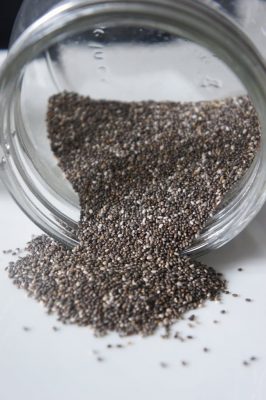Blossoms, flowers & plants, Food, Spotlights
Superfood Spotlight: Ch-Ch-Ch-CHIA!

Dec
Time: 3500 B.C.
Location: Mexico
Aztec warriors sit around the fire and fortify themselves for battle. A bowl of chiathe Aztec word for oilyis passed around. The Aztecs are convinced that chia has magical properties and gives strength and energy.
Chia, small balls, is the name given to the seeds of desert mint Salvia Hispanica. The small grains consist of 15% protein, 37% fibre, 18% omega-3 fatty acids and 30% oil. Chia therefore contains more protein than beef, more calcium than milk, more omega-3 fatty acids than any other plant, more fibre than oats and more magnesium than broccoli.
What chia can do
Chia keeps you full for a long time and keeps your body's energy reserves high for a long time. This is ideal for athletes, but also for anyone who has a long day ahead of them. Anyone who struggles with afternoon lows and ravenous appetite should try chia, as it regulates blood sugar levels and thus prevents both. If you want to lose weight, you can rely on chia: Omega-3 fatty acids help to dissolve stored body fat; the liquid-absorbing grains also become gelatinous, giving you a long-lasting feeling of satiety.
This is how it works
The ideal amount of chia seeds is one tablespoon per day. Like nuts or seeds, chia can be mixed into smoothies and juices, sprinkled over salads and desserts or even baked into breads and pastries. Mixed with any kind of milk, juice, tea, coffee or water, chia becomes a pudding that can be flavoured as desired.
Tip
In vegan and gluten-free cuisine, chia is often used as a substitute for gluten and egg. To do this, pour 2-3 tablespoons of water over a tablespoon of chia seeds and wait briefly. The seeds absorb the water and form a chia gel.

Chia seeds e.g. from Celnat (250g for 9.95.-) are here available.